Buddy Rogers Death – Stroke

Nature Boy Buddy Rogers – Dead at 92 after suffering a series of strokes
1921-1992 (Age 71)
Police officer turned wrestler Buddy Rogers achieved national renown as “Nature Boy” Buddy Rogers, the top-drawing heel during his run.
Rogers would become the first man to hold the NWA World Heavyweight Championship and the WWWF World Heavyweight Championship.
Rogers’ career and style would inspire many wrestlers, most of all Ric Flair, who emulated Rogers and even battled him for the title “Nature Boy.”
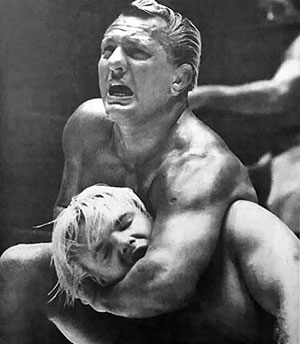
Christmas night 1960, Washington DC: Nature Boy Buddy Rogers locks up Johnny Valentine
A Talented Athlete
Born Herman Rohde, Jr., the man who would legally change his name to Buddy Rogers was a talented athlete who learned how to wrestle at the local YMCA.
Rogers was an all-around athlete, thriving in football, boxing, track, and swimming during his youth in Camden, New Jersey. Rohde won YMCA championships in wrestling and swimming, the beginning of a lifetime of championships.
Marketing Himself to the Top
Rohde began wrestling under the name Dutch Rohde, but adopted a new persona when he worked in Texas – that of bleached blonde self-proclaimed “Nature Boy” Buddy Rogers.
Inspired by the spectacular success of “Gorgeous” George Wagner who’d innovated the bleached blonde heel wrestler character, Rogers took things even further, becoming a box office draw and sure way for a promoter to revive a dying territory.
Rohde took his stage name from Buddy Rogers, a popular silent film star during the 1920’s and his nickname “Nature Boy” from a 1948 hit record by Nat “King” Cole (later covered by Frank Sinatra).
With his arrogant attitude, undeniable showmanship, and trademark submission hold, the figure-four leglock, Rogers became the most hated wrestler in America. Like “Gorgeous” George, Rogers’ popularity was fueled by the popularity of wrestling in the new medium known as television.
The Match of the Century
On June 30, 1961, Buddy Rogers faced NWA World Heavyweight Champion Pat O’Connor in the biggest match in wrestling at the time. Chicago’s Comiskey Park was the site of the main event billed as “The Match of the Century,” with a reported 38,622 fans on hand to witness the event.
The card sold $148,000 worth of tickets, a wrestling record that stood for almost 20 years. The exciting match-up saw Rogers defeat O’Connor for the belt in a two-out-of-three falls bout. After winning the belt, Rogers drew the fans’ ire by proclaiming, “To a nicer guy it couldn’t happen.”
Now, NWA World Heavyweight Champion, Rogers was more in demand than ever.
Unlike traditional world champions, Rogers wasn’t a shooter, but he was a top draw and a showman second-to-none. Promoter Vince McMahon Sr. took notice and booked Rogers extensively in his Capitol Wrestling promotion, drawing protests from other NWA territories that complained they weren’t getting Rogers enough for their shows.
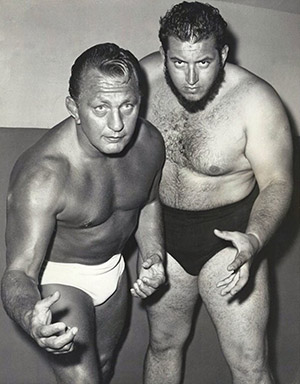
Nature Boy Buddy Rogers with the late Gorilla Monsoon
Rogers, who made more money in bigger markets, had no problem ignoring the smaller territories, even though the concept of the NWA was to have a touring world champion who appeared everywhere, helping boost business for every NWA member.
Eventually, McMahon decided to establish his own champion. Buddy Rogers dropped the NWA title to Lou Thesz in a one-fall match, but McMahon and allied promoters claimed Rogers was still champion as the match wasn’t a two-out-of-three falls contest. Thus, McMahon recognized Rogers as the champion of the organization that eventually became known as the World Wide Wrestling Federation.
An Abrupt Retirement
There are differing stories as to why McMahon took the belt off Buddy Rogers.
In his autobiography, Bruno Sammartino claims Rogers was no longer drawing and McMahon needed someone new, but by most accounts, Rogers’ health was an issue. Buddy Rogers is believed to have suffered a heart attack before his WWWF title defense against Bruno Sammartino. By most accounts, Rogers hid his condition by working in tag team matches, setting up the match with Sammartino.
The match with Sammartino went less than a minute, with Bruno delivering a backbreaker to Rogers and scoring the victory.
Rogers soon faded from action, lending credence to the theory he was unable to compete.
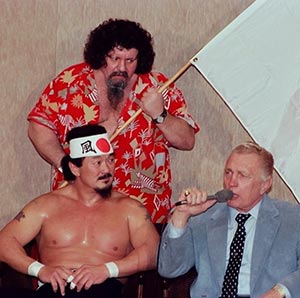
Buddy Rogers interviews Mr. Fuji with Lou Albano
Life After the Ring
Buddy Rogers was all but retired from in-ring competition, but he appeared in Jim Crockett Promotions in 1978, working as a heel manager for wrestlers such as Jimmy “Superfly” Snuka and Ken Patera. During this time, Rogers clashed with Ric Flair, who had adopted Roger’s “Nature Boy” moniker. The two battled in a short, but highly-regarded series with Flair defeating Rogers, establishing himself as the new “Nature Boy.”
Rogers resurfaced in the WWF, this time hosting a talk segment called “Rogers Corner.”
The segment was used to get angles over, and facilitated Jimmy Snuka’s face turn, with Rogers informing Snuka that “The Superfly’s” manager, Lou Albano, had cheated him out of his earnings. Rogers even teamed with Snuka in a few matches to battle Ray Stevens and Lou Albano.
Unfortunately, Rogers broke a hip during one of these matches and ended up suing the WWF, ending their business relationship.
Following his departure from wrestling, Buddy Rogers worked as a casino manager at the Playboy Casino.
Rogers’ age didn’t bother him as he kept fit with weight-lifting and swimming. Neither did heart problems as he underwent a quadruple by-pass, getting back into action, both literally and figuratively.
“I’m Only 68 — That’s Not So Old”
Buddy was enjoying a turkey sandwich at a Florida sub shop when a 6’2” 230-pound man in his late 20’s began verbally abusing two female employees. Rogers asked the man to quiet down, only for the ruffian to call him an old man and challenge him to fight. Rogers shoved the man into a wall, leading to the man throwing a chair at the former champion. Rogers unloaded on the would-be tough guy, leading to the much-younger man begging Rogers to stop, before he fled the sub shop. Rogers told a reporter the worst part of the incident was being called old. Rogers said, “I’m only 68 – that’s not so old.”
At age 70, he was reportedly scheduled to battle “Nature Boy” Buddy Landel in a “Battle of the Nature Boys” for Joel Goodhart’s Tri-State Wrestling Alliance promotion. However, the promotion went out of business before the event.
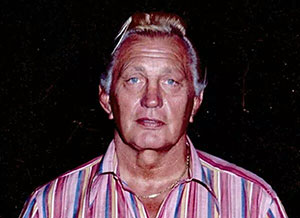
Nature Boy Buddy Rogers in his later years
A Picture of Health
Rogers seemed to be in remarkable shape and was enjoying retirement in Florida when he slipped in a supermarket, breaking his arm in three places.
According to Dave Meltzer’s 2001 book Tributes, Rogers “suffered three strokes over two weeks prior to his death. The first was a mild one. The second and third, both on Monday June 22, left him blind and paralyzed on one side of the body. He lapsed into a coma and was on life support systems by Wednesday of that week and officially passed away that Friday night.”
On June 26, 1992, the legendary grappler slipped the mortal coil. He was 71 years old.
Buddy Rogers was survived by his wife, Debbie; a son, David; and a brother, John Rhode.
Several other notable wrestlers passed away in the 90s including Andre the Giant, Owen Hart, Brian Pillman, and Junkyard Dog.
Buddy Roger’s Grave, Posthumous Inductions
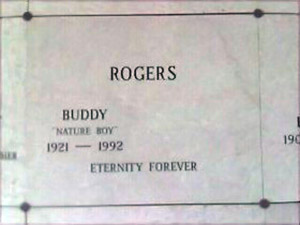
Buddy Rogers grave in Pompano Beach, Florida. photo: Jeffrey Tate
Buddy Rogers grave can be found in Pompano Beach, Florida at Forest Lawn Memorial Gardens North. His plot is located at the Main Mausoleum, East Wing Addition (Section V East-Level 3, Crypt 94 D).
Buddy Rogers was posthumously inducted into the WWE Hall of Fame in 1994 and was honored with inductions in the Wrestling Observer Hall of Fame, the National Wrestling Alliance Hall of Fame, the Professional Wrestling Hall of Fame and Museum, and the St. Louis Wrestling Hall of Fame.
What are your memories of the original Nature Boy? Share them in the comments section below.

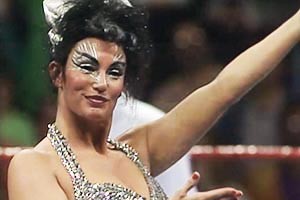
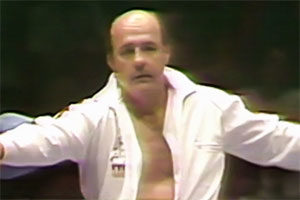
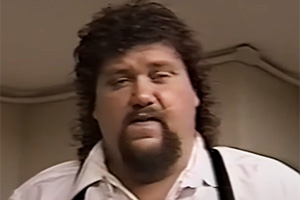
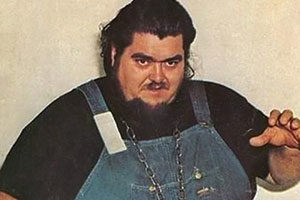
Leave a Reply